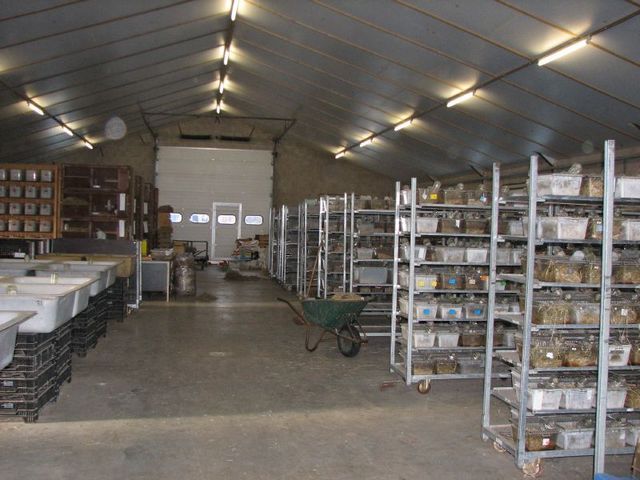
Rat Health Care & Information
 |
Rat Health Care & Information |
|
Rodent Farm |
|
|
Ever wondered where most pet shop rats come from? - Take a look inside a Rodent Farm The following images were originally posted on the Fancy Rats forum by Carla who lives in the Netherlands, but it gives you an idea of what the inside of a rodent farm actually looks like and where the vast majority of rats you will find in pet shops and pet sections of garden centres start out their lives. Carla is studying animal science and as part of her studies was invited to visit a rodent farm and the owner was happy to allow pictures to be taken by Carla and was happy to answer any questions that were asked. Although this particular rodent farm is in the Netherlands, similar set ups are used by rodent farms in many countries, including the UK. For pet shops/garden centres, sadly it makes sense for them to be able to source all their live and frozen ‘stock’ from the same place and many will not have knowledge or even care about what is really going on behind the closed doors as these animals are just profit to them. Quite often, staff in these shops will have no idea where their livestock comes from or are told to say ‘local breeder’ while management hides the source from them. Many of these rodent farms were originally set up to supply the growing herp market needing frozen rodents, but the pet market off the back of that was an easy one for them to step into, particularly as more and more chain stores and garden centres now sell small animals. (Great way to attract the impulse buyer and kids into your shop!) When you look at the kind of numbers involved and the set up, it is clear that the animals cannot be handled much as babies and understandable why perhaps so many mistakes are made on sexing them before they send them to pet shops at 5 weeks old, but these places won’t care as their business is making more, so they often offer pet shops to do ‘sale or return’ and send them back to be frozen after the pet shop has continued feeding them up for an extra few weeks. If you ever needed a reason not to buy your pets from pet shops, the below should give you some food for thought! Carla wrote the below text and has given permission for her images and text to be reproduced for NFRS Pro-Rat-a and also my Ratz website. “This man breeds mice, rats, hamsters, guinea pigs,
rabbits, lemmings, degus and gerbils. He also had a few ornamental birds and a
couple of owls. The rats are housed in pairs or in groups of three; lactating
does are housed separately with their young. The does are constantly pregnant or
lactating. When they are done breeding, they become snake food; the same goes
for ill and old rats or those that cannot be sold (deformities, etc). The rats
are fed rodent blocks and a few extras like bread, cat kibble and some
vegetables. They are kept on hemp type bedding. The Pictures  The Rat Housing
What can we do to reduce this trade? If the above pictures have opened your eyes and made you really think that you would like to stop the rodent farm trade, the best possible thing we can do individually is to educate, educate, educate! Individuals can make a difference; they just have to spread the word.
Article written by Estelle & published in Pro-Rat-a 163 |
Send mail to
Estelle
with questions or comments about this web site.
Images & Text
Copyright © 2008
Estelle Sandford, Alpha Centauri
Please do not reproduce without permission
Last modified:
February 08, 2017